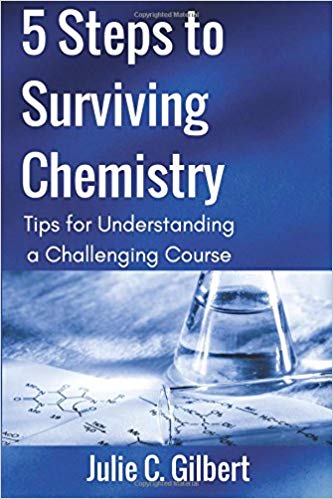
Do you struggle in chemistry class?
You’re not alone. It’s easy to get lost in the technical language. Enhance any course textbook with these step-by-step instructions to help with your homework and classwork sheets. Master the material and perhaps even have some fun along the way.
Inside, you’ll find …
• 13 easy-to-read chapters broken down by topic
• Detailed instructions for dealing with the math
• Tips and tricks for better understanding
• Common mistakes to avoid
Bonus: Suggestions for communicating effectively with your teachers.
“Excellent coverage of key topics for chemistry students of all levels (high school and college)”
~ David A. Hunt, Ph.D., The College of New Jersey, Professor of Chemistry
Genre: SCIENCE / Chemistry / GeneralIt's like 800 something ranking in gen chem and reference but that pops to the thousands if you move to a broader category like General Chemistry.
I sell more copies directly word of mouth. Also, paperbacks are more popular than ebooks for this one.
There don't seem to be many resources available for Spanish-speaking students, so that'd probably be a promising place to expand.
(I am no longer pursuing translations through this company.)
Introduction: The Ally and the Enemy
Chemistry has a lot of formulas that allow us to explore the topics in more depth. Any time you wrestle with formulas or measurements, you’re going to be dealing with units. Despite popular belief, units are your friends. They will make your life easier if you learn to let them do their job. If you fight them, they will haunt your dreams.
Note: As time has become a rare commodity, many schools have phased out the discussion about significant figures. Even I’ve taken to just telling my students how many significant digits they should go to, instead of waiting for them to figure out how many they should be able to get from a particular instrument. As you wade through this course—and much of life for that matter—you have to pick which battles you want to fight.
Significant Figures and Scientific Notation:
Scientific Notation: a way of presenting massively large or extremely small numbers to something reasonably readable.
Scientific notation follows the pattern M x 10x (your M value must be greater than 1 but less than 10).
| Language | Status |
|---|---|
|
Greek
|
Already translated.
Translated by Lampri Geo
|
|
Italian
|
Already translated.
Translated by Emiddio Esposito and Elisabetta Croce
|
|
Spanish
|
Already translated.
Translated by Alberto Gómez Herrera
|